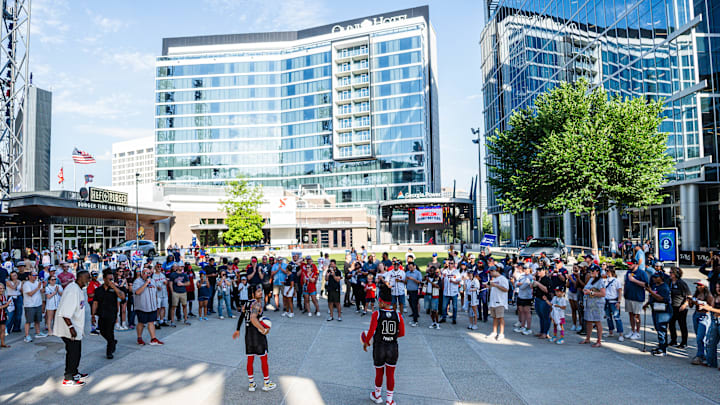What do Mr. Krabbs and Mitch Barnhart have in common?
Money.

On June 13, the UK Board of Trustees approved a $110 million athletics investment plan. Buried inside was a formal request for information (RFI) about building a large-scale entertainment district on campus — the kind of “fan zone” that could transform the south side of campus around Kroger Field, Kentucky Proud Park, the Wendell & Vickie Bell Soccer Complex, and John Cropp Stadium.
Athletics director Mitch Barnhart told BBN Tonight’s Maggie Davis he envisions something like Milwaukee’s Deer District — a sports, retail, and dining hub where thousands gather on game days, even without tickets. Fans could arrive hours early, watch away games on massive outdoor screens, eat at on-site restaurants, and keep the party going long after the final whistle.
That’s the fan-facing sell. The real reason? Revenue — steady, year-round money that’s not dependent on the schedule or the scoreboard. In the NIL and revenue-sharing era, diversified income is king.
Just look at The Battery Atlanta, the gold standard for this kind of project. The Battery is a 2.25-million-square-foot mixed-use development wrapped around Truist Park, home of the Atlanta Braves. In 2024 alone, it generated $663 million in revenue — more than double what the Braves made at their old stadium. And because it’s separate from ticket sales and baseball-related revenue, the Braves keep it all. Since its opening, the franchise’s valuation has jumped 250%, according to Forbes.
That’s the kind of math Barnhart is eyeing. A Kroger Field entertainment district could:
- Create a new, permanent revenue stream outside of ticket sales and donations. Even people who aren't going there for sports could go for shopping or dining.
- Provide NIL-friendly spaces for athlete and brand activations.
- Improve recruiting by showcasing a vibrant, game-day-adjacent hotspot filled with people and massive screens.
- Build fan habits that extend beyond the game itself.
- Support Lexington’s economy with new jobs and increased tax revenue.
Of course, UK will have to navigate logistics — parking, traffic flow, security, and the right mix of tenants (ideally including Kentucky-owned businesses, not just national chains). But the upside is massive.
Barnhart’s pitch is about enhancing the fan experience, and that’s real. But the bigger play is building a financial engine that can keep Kentucky Athletics competitive in a changing college sports economy. The Battery proved it works. Now UK is exploring how to make it blue.
